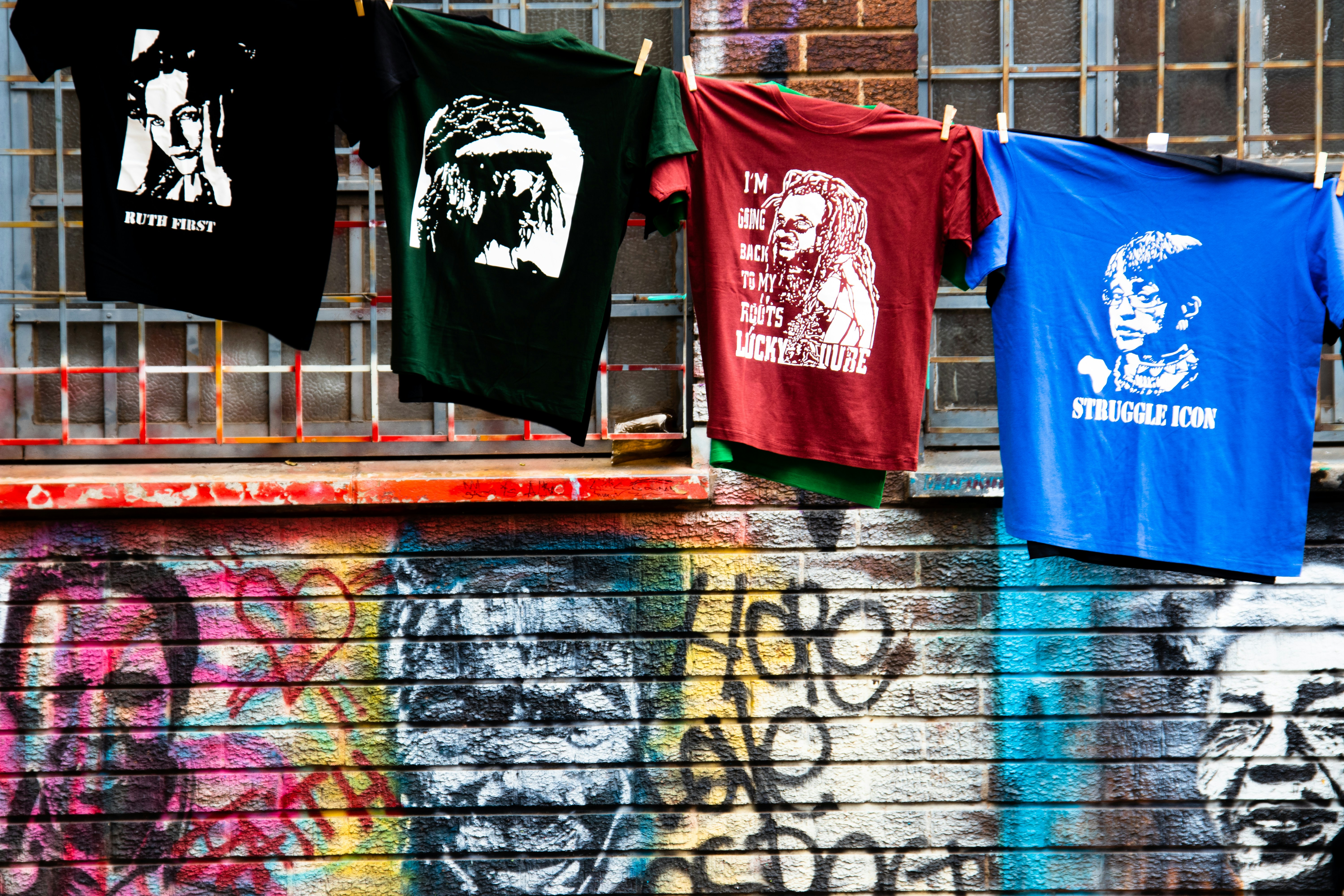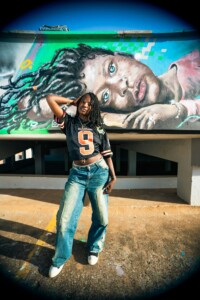We’ve all witnessed the work of spray-paint graffiti vigilantes. We’ve driven past murals stretched across the lengths of buildings or reaching the highest points in our cities. Across Africa, art is everywhere you turn, appearing and disappearing overnight but revealing a constant reservoir of expression.
Public attitudes towards street art are as malleable as the works themselves. Galleries, museums and art houses respond to this pulse of creativity in interesting ways. Unlike the streets, these are spaces where the rules are clearer. There is often less public-facing challenge to the status quo: you won’t see this art by accident on your daily commute or confronted by the artists’ willingness to display their vulnerabilities when you least expect it. You won’t happen upon a controversial installation set up outside a university campus or plastered in protest across the walls of a bank. Yet, the conversation between the publicity of street art and the private and controlled gallery spaces tells us how far we’ve come and how far yet to go.
The visual arts culture of Africa is evolving. Visual artists inform the symphony of street art by creating landscapes of the stories that matter most to communities. Whether it’s political outcry, surges in social trends or disdain for the status quo – you’ll know what’s happening in a community by paying attention to the artists who run the streets.

What do galleries mean to the average African today? Do museums and exhibitions get the attention of the masses or are they a playground for the elite?
I’ve observed a growing curiosity about the possibilities of the gallery space. Street artists are no longer only reachable in the remote, decentralised spaces outside. Galleries are no longer inaccessible bubbles. There is a conversation happening between the two that demands recognition.
Africans have been making art since humanity’s genesis. Cave paintings, etchings in the sand, sculptures, and clay homes painted in soil and minerals. These forms of expression are more than just a decorative practice, but communicate heritage, cement familial structures and pass on important information about communities.
Ancient relics capture our continent’s history.
An excellent example is how the kingdom of Benin boasts opulent structures cast in bronze as a commemoration of their ancient ties to the spirit world and an archive of ideological and social attitudes. The ancient world is the bedrock of street art today for this reason.
Who were the people that laid the foundation for the art we see today? There are many ways to answer this question. Street art has always existed, for as long as there have been ideologies and schools of thought that don’t rely on institutional structures to thrive. It is the basis of activism and personal storytelling that urges street art on. In the same breadth, this form found a concrete footing as a response to social and political unrest.

1980s South Africa was a time of deep discontentment between the people and government as a response to the apartheid regime. After decades of an unjust, undemocratic system, South Africans became more emboldened in their protests, leaning on music, literature and even street art to advocate for the rights of all South Africans. There is a marriage of these kinds of responses to societal unrest happening across the diaspora, despite the high risk attached. Street art was largely illegal – often, it still is.
Artists already face the plight of not being protected. This industry is not fully equipped with structures that protect the needs of artists. It is an often unregulated, tumultuous arena to play in against the backdrop of an unpredictable society. When South African artist Vuyisa “Breeze” Yoko spoke out about having his work (for which he did not receive compensation) plagiarised, this sparked a nationwide conversation about the precarity of making street art despite its importance.
This is contrasted with the maze of navigating gallery representation as there is a false sense of security manufactured by our perception of ‘the institution’. On the surface, submitting to galleries seems straightforward, yet there are many barriers to entry an artist might face when trying to trudge along the more so-called scenic route. Artists often need to present extensive portfolios, prove years’ worth of experience, and be willing to occasionally sanitise the risk factor (in other words, the truth) of their message. On the other hand, artists may be expected to become a spokesperson for an issue that may affect them, stripping them of their opportunity to communicate a nuanced and personal experience. Marginalised artists who enjoy more visibility also suffer from a particularly suffocating pressure to represent an entire group – and do so perfectly to maintain some proximity to power. Their pain becomes a romanticised ideal to appeal to a wider audience. It is disproportionately Black, Brown and other marginalised artists who suffer the most from this expectation – stopping them from freely creating work on their terms.
An artist who has spoken up about this is Laura Windvogel-Molifi, professionally known as Lady Skollie.
In an interview with the Connect Everything Collective, she says, as a coloured South African woman, she sometimes feels required to fulfil expectations that have nothing to do with her work.
“People would start sending me links, asking why I hadn’t commented on something – almost demanding my voice – and that was a big wake-up that the expectations of me as a public figure were not so much about my art anymore.”

I recently visited the Keyes Art Mile in Johannesburg. This is a cluster of smaller galleries stretched along a mile road in the centre of Rosebank – a social and artistic hub in the city. There are several exhibitions on display, each demonstrating an acute awareness of the street culture of South Africa. This already sets this space apart from so many older galleries across the continent.
At BKhz (one of the galleries on the mile), Nelson Makamo’s exhibition titled Maru ke ao a tla le pula is a time machine housing an intimate confrontation with an ephemeral recollection of childhood, memory, community and history.
Nelson’s body of work is so steadfast in its nostalgia that it forces the viewer to ask deeper questions about what it means to relate to representations of past, present and future in South Africa. The viewer must listen to the streets for an answer, no matter their relationship to the land itself.
So, what does a visual renaissance look like for the streets and galleries of Africa?
It happens in the quiet corners of communities. Think of the African arts sector as an ecosystem that sustains itself through a community-based structure. If one component of the structure dies off, the whole ecosystem ceases to exist. Whereas, where one component changes and evolves, the ecosystem enjoys more sustainability, diversity and reach.
We must think of our arts sectors as holistic tenets of society in order to sustain them. Whether it’s the Mashrabia Gallery in Cairo, Art Twenty One in Nairobi, BKhz Gallery in Johannesburg or Galerie MAM in Kinshasa, these spaces hold a sense of truth when the artists that inform their cityscapes are protected and elevated.
Artists are becoming more equipped with the language to advocate for their seat at the table, with or without representation. It’s high time institutions pay attention.
Sources:
Afro IP, 10 things you need to know about protecting street art, 2015.
Connect Everything Collective, Lady Skollie’s illustrious presence, 2022.
Keyes Art Mile, Nelson Makamo “Maru ke ao a tla le pula”, 2024.
MoMAA, Exploring contemporary African art galleries across the continent, 2023.
Photos:
1 by Humphrey Muleba via Pexels. Description – Graffiti Wall Art
2 by Sizwe Shabalala via Pexels. Description – Johannesburg, South Africa
3 by Gregory Fullard via Unsplash. Description – Apartheid struggle t-shirts in Johannesburg, South Africa
4 by Dwayne Joe via Unsplash. Description – Nairobi, Kenya
The pages of Fifty Four Mag share with the world the art, culture, talent, and luxury that exist throughout the African diaspora—through words and images that are crafted with deep consideration and an unwavering commitment to authenticity.
©2024 Fifty Four Magazine. All Rights Reserved. Privacy Policy legal Information Advertising Opportunities
©2024 Fifty Four Magazine. All Rights Reserved.
Powered by SOLVNT